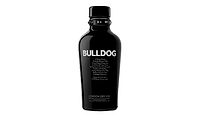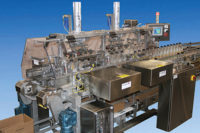Last month, an article by Brigid Sweeney for Crain’s Chicago Business titled “For Meijer, bigger is better,” caught my attention. Not far from my family’s new home, they are closing in on the final stages of completing a Meijer store; so needless to say, my curiosity was more than piqued.
In March, the big-box retailer issued a release about how it is investing $400 million in new and remodeled stores this year. In 2016, the company will open nine new supercenters across the Midwest and will remodel stores in key markets, including Detroit, Indianapolis and Fort Wayne, Ind., it said in the release. However, Sweeney’s article detailed that Meijer also will be closing one of its mini-supercenters in a Chicago suburb. She also noted the mixed results from other retailers — Target, Wal-Mart, Dollar General, etc. — on opening these smaller locations in urban areas.
Aside from my four years at college, I’ve always lived in suburbs, so I probably am not the key demographic that mass merchandisers were considering when creating small-format stores. However, where they will fall in the retail landscape has always intrigued me. Although the jury still is out on small-format stores, retailers aren’t going to sit back and wait to see what happens. Instead, more mass merchandisers are embracing another format to appeal to today’s consumers: eCommerce.
It’s no secret the impact that sites like Amazon and Jet have had on online shopping, but more retailers and mobile app creators are embracing the digital space when it comes to consumable shopping.
For example, Meijer offers its Curbside Pickup, a service that allows shoppers to place online orders, choose the time of day for pickup, and either go in to retrieve their groceries or, if the store is equipped with its Drive Up service, have them loaded into their vehicle.
Wal-Mart also continues to embrace this online avenue. In an April blog post titled “Sharing the Love for Grocery Pickup,” Michael Bender, executive vice president and chief operating officer of Wal-Mart Global eCommerce, announced that the retail chain is expanding its free grocery pickup to eight new markets: Kansas City, Mo.; Boise, Idaho; Richmond and Virginia Beach, Va.; Austin, Texas; Provo, Utah; Daphne, Ala.; and Charleston, S.C. It also is doubling the number of locations in the Dallas, Houston and Atlanta markets, where store pickup already exists.
Specifically in the beverage market, the Drizly mobile app continues to make waves when it comes to online ordering and on-demand delivery. The technology company, which offers its services to more than a handful of metropolitan cities across the United States, expanded into western Canada earlier this year in a partnership with Liquor Stores N.A. Ltd. Now legal-age consumers in the Edmonton market will have access to the Drizly app and website for their online wine, spirits and beer orders.
Online ordering also has become a bigger part of my shopping experiences. As ordering, delivery and pickup services continue to proliferate, I look forward to incorporating it even more in my day-to-day life. Now if only the apps could put the groceries away for me.




